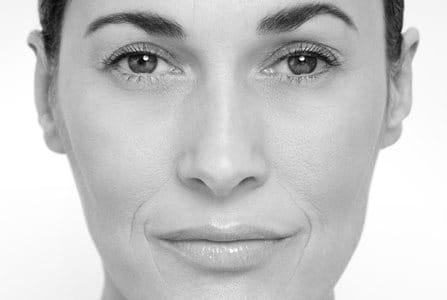The sun is the source of all energy, and it brings with it many benefits, from sustaining photosynthetic life to aiding the production of vitamin D in humans. However, as with most biological processes, there is a balance; sun exposure is good, but there is a limit, and too much sun exposure can be harmful, especially for the skin.
What is sunlight?
Sunlight consists of spectrum of rays of varying wavelength. Visible light has a wavelength of 400-700 nm, while invisible ultraviolet (UV) light has a shorter wavelength (280-400 nm), and invisible infrared light has a longer wavelength (700 nm - 1 mm). The longer wavelengths, visible and infrared light, are able to penetrate deeper into the skin, yet are less likely to cause damage.
Short-wavelength UV light that interacts with skin cells generates highly reactive free radicals.
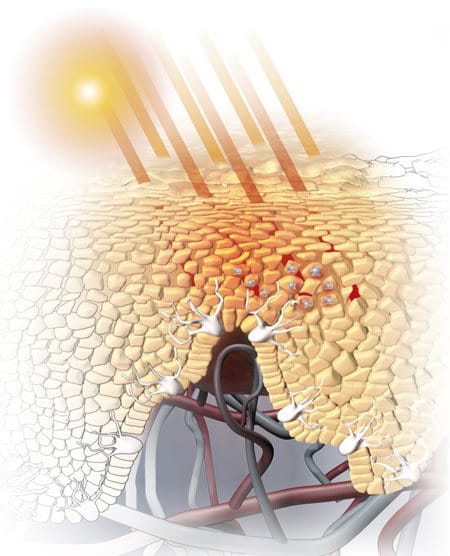

These excessive free radicals (oxygen molecules) cause cell damage. The more damage they cause, the higher the chance of developing wrinkles, chronic illness and other diseases including skin cancer.
Oxidative stress is caused by the imbalance between the production of free radicals and the body’s ability to neutralise them with anti-oxidants. As UV light is a short wavelength, it can only penetrate through the stratum corneum, epidermis and dermis (the upper layers), and not the hypodermis (the lower layer), yet is capable of causing an array of complications within these tissues.
Read more about the structure of skin.
UV light comes in three forms, ultraviolet A (UVA), ultraviolet B (UVB) and ultraviolet C (UVC):
- UVB provides the energy your skin needs to make vitamin D, but it is also responsible for sunburn and direct DNA damage.
- UVA also contributes to skin damage, particularly premature ageing.
- UVC is blocked by the earth’s atmosphere and therefore does not reach the skin.
The amount of UV light the skin comes into contact with depends on many factors, such as the time of day, the season, altitude and geographical location. During times of intense UV radiation, for example midday on a hot summer’s day, it is advisable to wear protective clothing and sunscreen when going out doors.

How sunlight affects the skin
Sunlight, especially UVA and UVB rays can cause sunburn, premature skin ageing, eye damage, a weakened immune system, photoallergic and phototoxic reactions, and even skin cancer. Physicians and dermatologists increasingly warn about the strong correlation between the frequency of skin cancer and the extent of DNA damage, reminding us that more than 90% of skin cancers are the result of sun exposure. It is widely known that the best treatment is prevention by sun protection.
Learn more about protecting against sun-exposure.
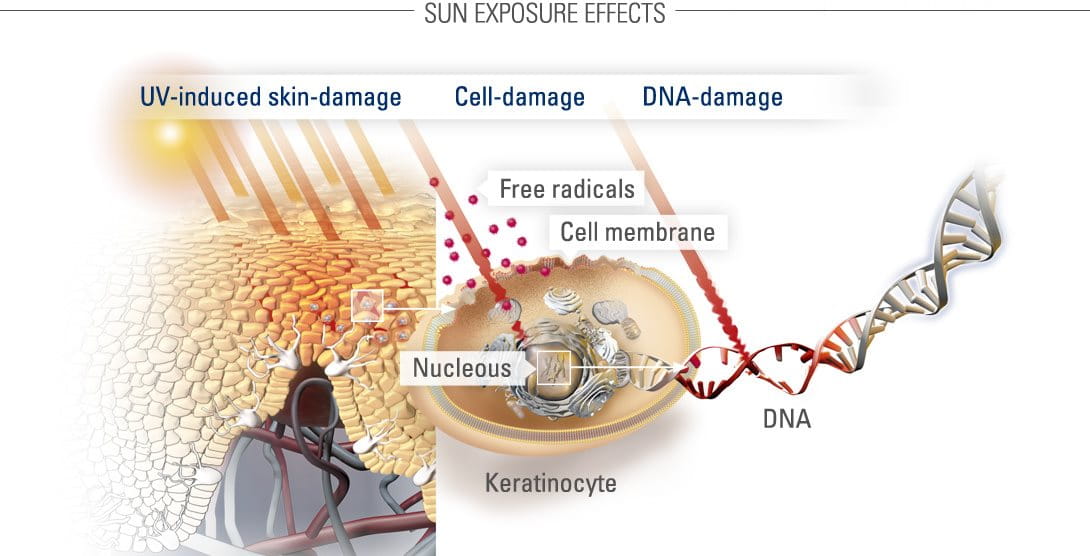
The majority of sunlight impact on the skin is caused by UVB and UVA rays. The below table details the properties and effects of these two types of UV light on our skin.
Protecting skin against UVA and UVB rays
Both UVA and UVB rays have detrimental effects on the skin but the intensity of UVA rays is rather constant throughout the day whereas the intensity of UVB fluctuates. The sun protection factor (SPF) ranking system for sunscreens is based on the level of UVB protection the product offers. However, products containing the UVA protection symbol have to provide a minimum level of UVA protection. The ratio should be 1:3 for UVA: UVB protection.
It is therefore important to find out the intensity of UV light in your area each day and apply an appropriate level of UV protection.
The European Cosmetics Trade Association (formerly Colipa) has also set UV-protection standards for sunscreens. International Standard ISO 24444-2010 is a reliable method of testing the UV efficacy of sunscreen products, and is in line with EU Commission.
Skin phototypes and the sun protection factor
The optimal sun protection has to be chosen due to the individual skin´s sensitivity to sun (skin pigmentation) and radiation intensity.
The sun protection factor (SPF) multiplied with skin´s natural protection in minutes indicates the maximum length of exposure to sun without risking UV induced skin damage.
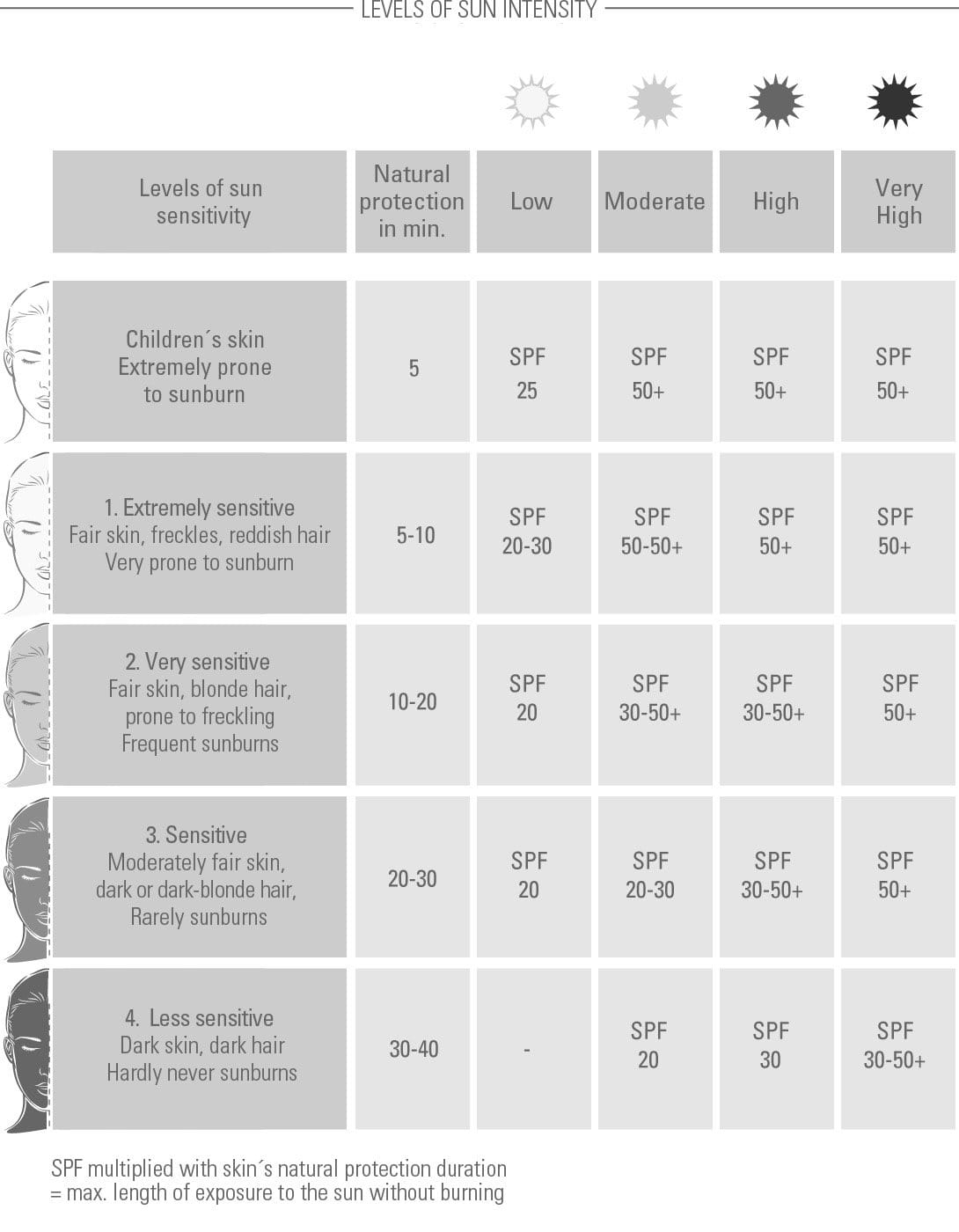
Children´s skin is thinner and is highly sensitive to sun. Here a very high sun protection factor is essential to prevent from UV induced skin damage.
Read more about children´s skin and sun.
Attention
If you are unsure which sun protection factor fits to your skin type or condition try the skin test to find out or ask your dermatologist.
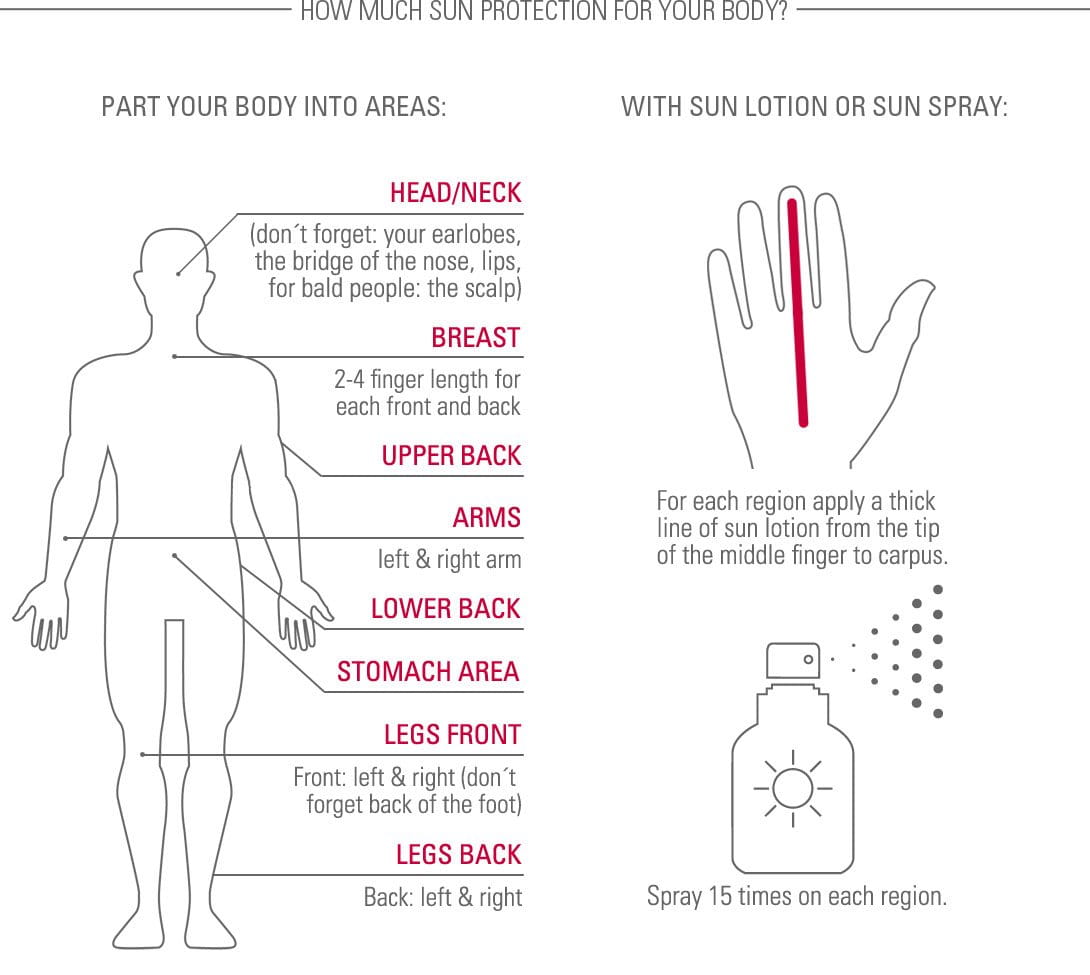

Positive effects of the sun
It is well known that sunlight can elevate the mood, although the exact process behind this is not fully understood. What is well researched is the fact that a lack of exposure to sunlight can lead to vitamin D deficiency and Seasonal Affective Disorder (SAD), which are possibly related.


Mood elevation (prevention of Seasonal Affective Disorder (SAD)
Studies have shown that the rate of serotonin production in the brain is directly affected by the amount of sunlight the body is exposed to that day. Serotonin levels are higher on bright days than on overcast or cloudy days. Serotonin is a powerful brain chemical that controls mood and is associated with happy feelings.
Similarly, people who have reduced exposure to sunlight, usually in the winter months in the northern hemisphere, experience symptoms of depression, difficulty concentrating, low energy or fatigue, and excessive sleeping. Together these symptoms are classified as Seasonal Affective Disorder, or SAD. The exact cause of SAD is not known, but it is known that it is caused by a lack of exposure to sunlight. It has been theorised that it may be due to a decreased production of vitamin D, but this has not been proven.
Negative effects of the sun on skin
There are many adverse complications that can be caused by overexposure to the sun. The following is a brief description of the most common complications - from sunburn to skin cancer.
Sunburn
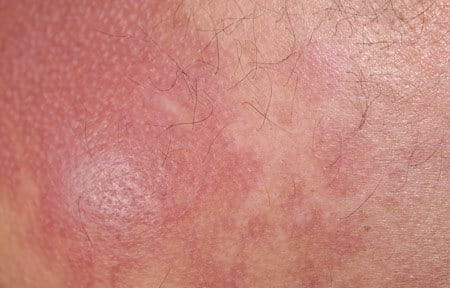
Sunburn is the most common form of sun damage and is mainly caused by UVB rays. It is characterised by red, sore and blistering skin. These symptoms may not appear immediately and can take up to five hours to appear. Sunburn can be prevented by applying sunscreen every day and by minimising exposure to the sun when UV-rays are strongest (between 10am and 4pm). Treatment of sunburn centres on cooling the skin to relieve pain and inflammation. This includes applying a cold flannel to the affected area, and using ‘after sun’ products that cool and soothe the skin.
Find out more about Eucerin After Sun products.
Attention
In severe cases of sunburn you should consult a doctor immediately. You should also see a doctor if you have sunburn and you feel faint, dehydrated or have severe blistering, or if a young child or baby becomes sunburnt.
Sun allergies
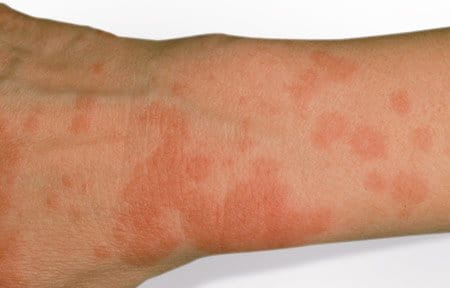
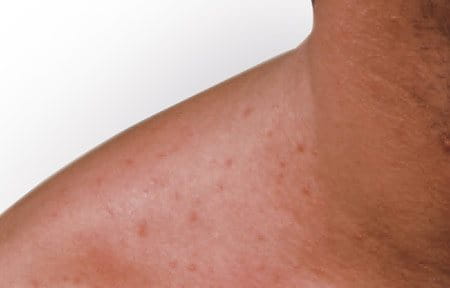
Polymorphus Light Eruption (PLE) is the most common form of sun allergy and is diagnosed in about 90% of all patients with sun allergy. Its prevalence in Western Europe and the USA is approximately 20%. Sun allergies are triggered by oxidative stress caused by UVA- and, to a lesser extent, UVB-induced free radicals.
Acne aestivalis (Mallorca acne) is triggered when UV radiation combines with certain ingredients in topical cosmetics or sunscreens, such as emulsifiers, causing irritation and inflammation of the sebaceous follicle. Acne aestivalis affects approximately 1-2% of the population, with young to middle aged women (25-40 years) being most affected. Its symptoms are very similar to those of PLE, and it is often difficult to distinguish between them.
Drug-induced photosensitivity
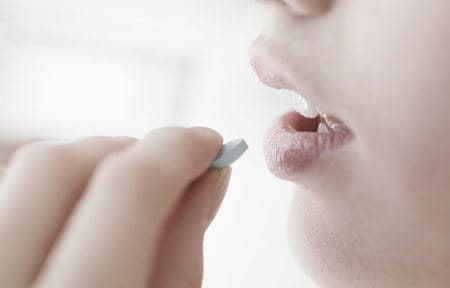
Phototoxic and photoallergic reactions can develop when a medicine, which does not normally cause sensitivity, undergoes photoactivation when it interacts with UV light as it enters the skin causing cutaneous manifestations.
Photosensitivity reactions may result from both oral (systemic) medications and topically applied medications and cosmetics.
Some anti-inflammatory medications, or ‘painkillers’, such as ibuprofen can also cause photosensitivity. Other commonly used photoactive medications include antibiotics, non-steroidal anti-inflammatory drugs, diuretics, statins, retinoids and antifungals. It is therefore important to consider this when choosing a moisturiser, lotion or sunscreen.
Learn more about drug-induced photosensitivity.
Attention
If you are not sure if the medication you are using can cause photosensitivity, or you want general information about which medications can cause photosensitivity, please contact a pharmacist or dermatologist.
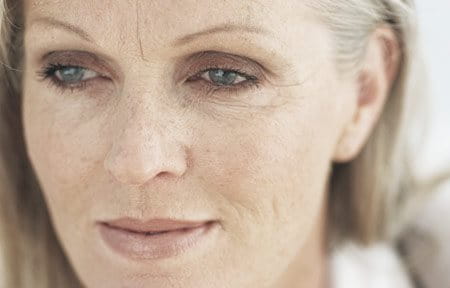
Premature skin ageing
Most premature ageing is caused by sun exposure. Responses include freckles, age spots (also known as “liver spots”), spider veins on the face, rough and leathery skin, fine wrinkles that disappear when stretched, a blotchy complexion, loose skin and actinic keratoses can all be traced to sun exposure.
Skin cancer
Skin cancer is most likely to appear on skin that is more exposed to the sun, so facial skin is at risk. As actinic keratosis is a precancerous lesion, some keratoses can develop into cancer.
Acnitic keratoses are dry scaly patches of skin caused by damage from years of sun exposure. They are pink, red or brown and range in width from 0.5 to 3cm and most commonly found on the face (especially the lips, nose and forehead), neck, forearms and backs of hands and (on men) on the rims of the ears and bald scalps and (on women) on the legs below the knees.

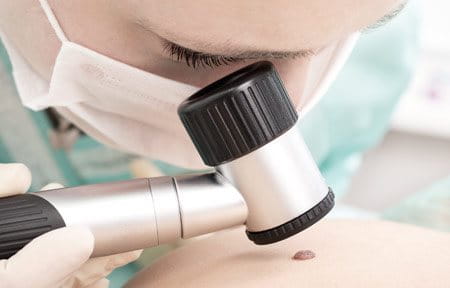
Basal cell skin cancers look like a small, slow growing, shiny, pink or red lump. If left, they tend to become crusty, bleed, or develop into an ulcer. They are most frequently found on the face, scalp, ears, hands, shoulders and back. Squamous cell skin cancers are usually pink lumps. They may have hard or scaly skin on the surface and are most often found on the face, neck, lips, ears, hands, shoulders, arms and legs. They can bleed easily and develop into an ulcer.
Melanoma is the most serious type of cancer. The first sign is often the appearance of a new mole or the change in appearance of an existing mole. Melanomas are more likely to have an irregular shape, be more than one colour and be larger than 6mm. They can be found anywhere on the body but the back, legs, arms and face are the most common locations.
Attention
If you have any concerns about any sun damage symptoms we recommend you consult your doctor or dermatologist.
Properties of UV - rays
Properties of UVA rays
UVA rays are present constantly throughout the day.
They activate melanin pigment already present in the upper skin cells, producing a short-term tan.
UVA rays can virtually pass unhindered through layers of clouds and smog.
UVA rays can even penetrate glass and windows.
As UVA rays penetrate deep into the lower skin layer (dermis) they play a greater role in long-term sun damage, rather than acute damage
- Premature skin ageing
- Sun allergy, PLE and sun intolerance
- Immune suppression
- Eye and retina damage
- Indirect DNA effects mediated through formation of free radicals
- Genetic mutations (Melanoma)
Drug-induced photosensitivity
Properties of UVB rays
UVB rays fluctuate throughout the day, and are strongest at noon.
They stimulate the production of new melanin, responsible for longer-lasting tans, and stimulate cells to produce a thicker epidermis.
Can burn and damage skin especially during summer seasons and at high altitudes.
Penetrate less deeply but generate free radicals at all levels of the epidermis.
Affect DNA more than UVA, and are the prime cause of DNA damage.
UVB rays can reach as far as the deepest cell layers of the epidermis and are the main cause of acute sun damage
- Sunburn
- Direct DNA damage and skin cancer (non-melanoma skin cancers)
- Eye and retina damage
Drug-induced photosensitivity






